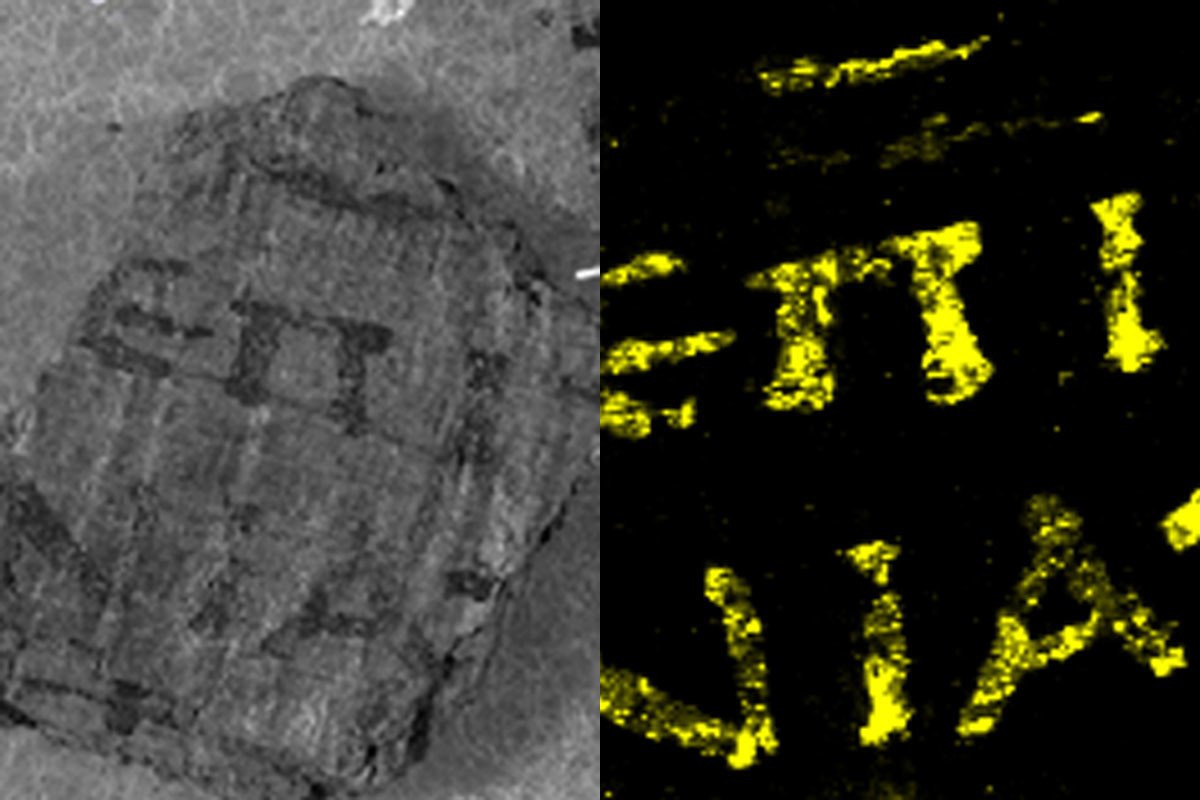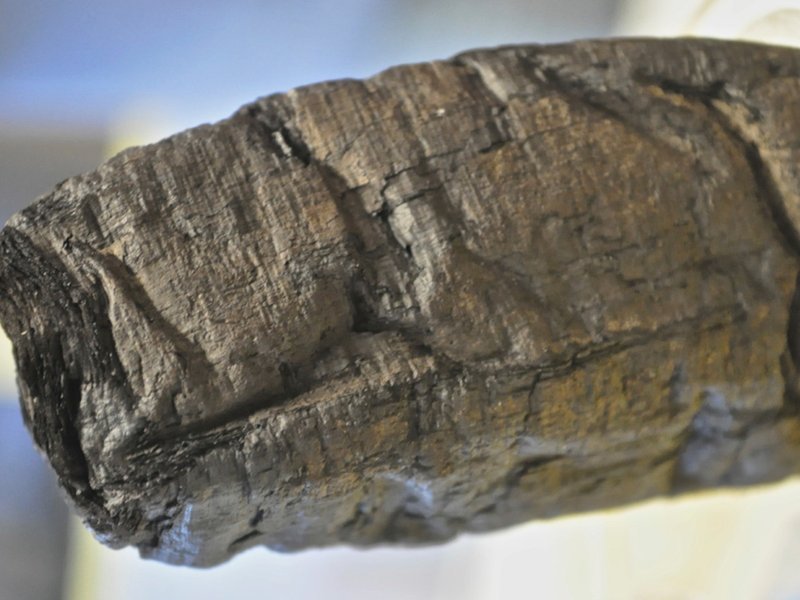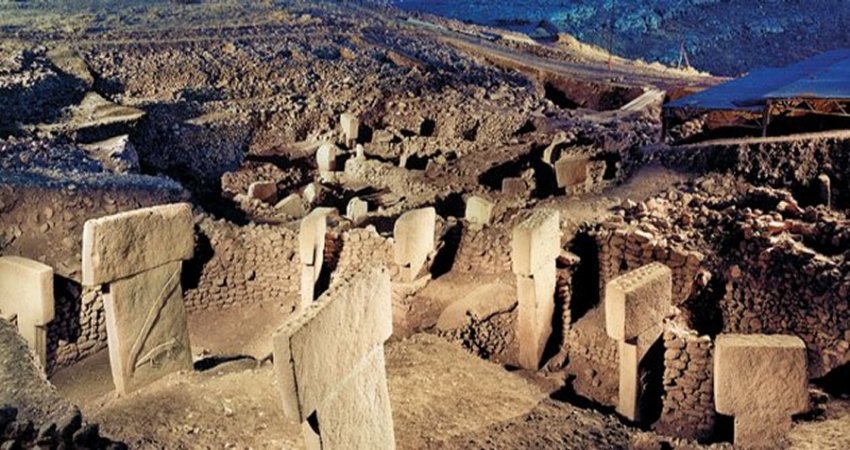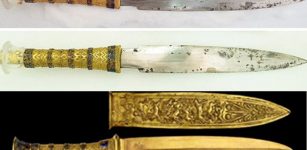Metallic Ink Discovered In Ancient Herculaneum Scrolls
MessageToEagle.com – On the morning of August 24, 79 AD, Mount Vesuvius erupted and broke its centuries-long silence. Its great cloud of hot ash, stones and poisonous gases completely buried the whole Roman city of Pompeii and for more than seventeen centuries, it would remain lost, forgotten, sealed and preserved in a time capsule.
In 1752, 800 ancient scrolls were unearthed in a villa in the ancient Roman city of Herculaneum. About 200 are in such a delicate state that they have never been read. The ancient Herculaneum scrolls have puzzled historians for decades.
Researchers have now used one of the world’s most sensitive X-ray microscopes and discovered that the ancient Herculaneum scrolls were written with lead-based ink. This exciting finding might allow historians to read information that was once thought to be lost to time.
“This really opens up the possibility of being able to read these scrolls,” Graham Davis, an expert in 3D X-ray imaging at Queen Mary University of London tells van Gilder Cooke. “If this is typical of this scroll or other scrolls, than that is very good news.”

E.BRUN
Scientists have suspected for some years that the Herculaneum Scrolls were written in lead-based ink. In 2009, a computer scientist studying the scrolls at the University of Kentucky in Lexington found traces of lead in the ink. However, researchers were cautious, due to the extent of the scrolls damage and the fact that most historians believed that lead-based ink wasn’t invented until about 400 years after the scrolls were written.

New technology opens a number of possibilities to solve ancient mysteries. This new studytook place at the European Synchrotron Radiation Facility in Grenoble, France. With help of synchrotron, an advanced instrument, scientists were able to conduct a highly detailed X-ray scan of several samples taken from the scrolls, which were written on papyrus sheaves. The device, which produces X-rays that are 100 billion times brighter than those used in hospitals, not only helped decipher some writing on the scrolls, but indicated that the ink used to write them could contain lead.
Until now it was assumed the ink used for the most ancient manuscripts, particularly the literary papyri both in Greek and Latin, was carbon-based -– obtained from smoke residues of wood burnt in furnaces. However, the new scans indicate that lead was added to the ink, possibly to speed up the time it took for it to dry.
See also:
Herculaneum Time Capsule: Ancient Scrolls With Secrets Buried Under Volcanic Ash And Stones
10 Magnificent Ancient Libraries
Earthquake In Pompeii, Italy Occurred – Feb 5, 62 AD
Whatever the lead’s use then, it seems to have a clear use now. “This is the way we will get back some of the lost knowledge of antiquity,” says Richard Janko, a classicist at the University of Michigan in Ann Arbor.
“Until now, I hadn’t expected to be able to read any of these scrolls from the inside, without damage to them, in my own lifetime, but I do now” Dirk Obbink, an Oxford University papyrologist and classicist said.
The Herculaneum scrolls make up the only library known to have survived the ancient world. The carbonized scrolls are thought to hold Aristotle’s lost 30 dialogues, philosophical work by Epicurus, erotic poems by Philodemus, Virgilius, scientific work by Archimedes and lesbian poetry by Sappho. About 400 have never been unrolled and 450 are so difficult to read that their text remains unknown.
The new finding promises to open new paths of exploration into the Herculaneum scrolls.
MessageToEagle.com
Expand for references










